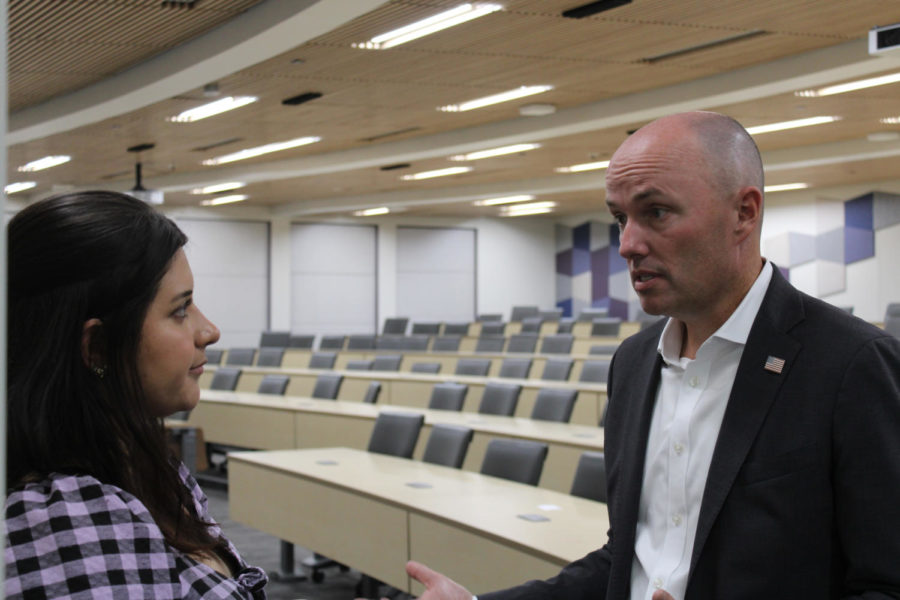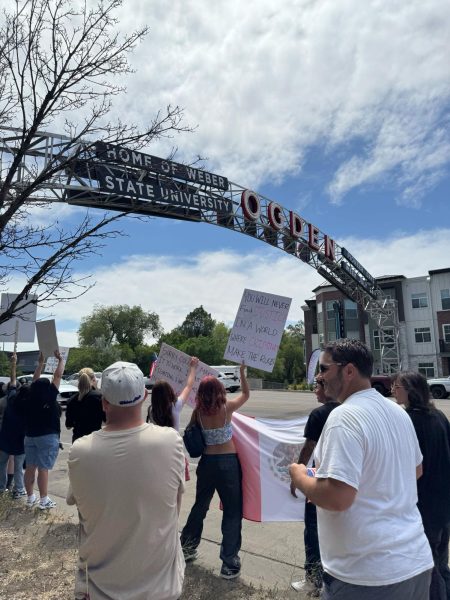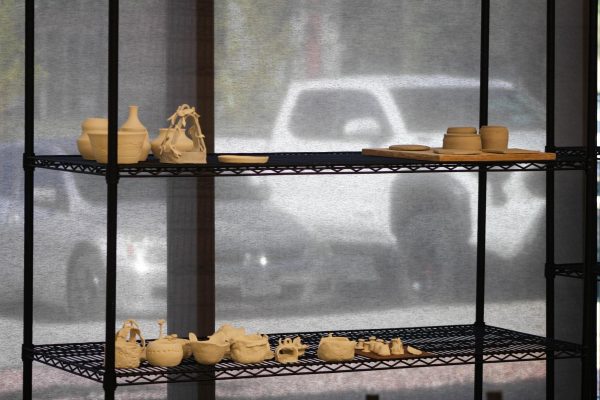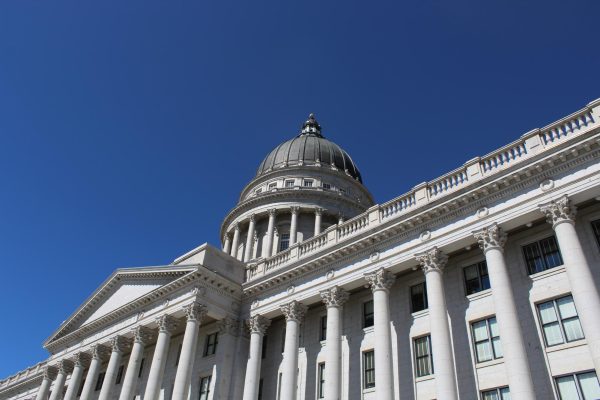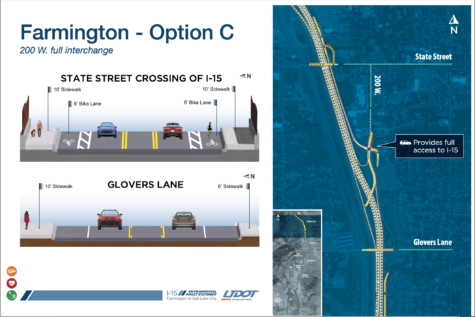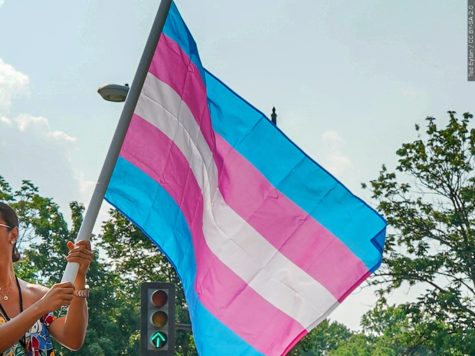A talk with Gov. Cox
In his Utah 360 tour, Gov. Spencer Cox visited Weber State University to have a conversation with University President Brad Mortensen, and students, about their worries concerning Utah’s rapid internal and external growth.
The Utah 360 tour features statewide town hall meetings, speaking engagements and various site visits to discuss the concerns of Utahns and answer their questions.
This tour comes from Cox and Lt. Gov. Deidre Henderson’s office in an effort to engage in discussions with the people that they serve.
In 2021, The United States Census reported that Utah was the fastest-growing state with a population increase of 18.4% over the past decade.
External growth has outpaced internal growth, with a quarter of the external growth being civilians who moved back to Utah after leaving previously.
Focusing on infrastructure, Cox cited this as a vital part of Utah’s growth. While the population continues to increase, the state’s infrastructure becomes more demanding.
“Density and growth without infrastructure lowers the quality of life,” Cox said. “Density and growth with good infrastructure enhances the quality of life.”
An example of this demand for infrastructure comes in the form of public transportation. Ogden has been working on the construction of the Ogden Express line since 2021 in an effort to increase the use of public transportation at a low cost for passengers — and the environment.
For the first time, the Utah Department of Transportation and UTA will be working together regarding infrastructure and planning. The goal is to reduce the current overlap that UDOT and UTA face.
“How do we make it cheaper, how do we make it reliable and how do we make it closer to where the people are? When you get those three things right, then transit opens up for everybody,” Cox said.
The Utah housing crisis has also made its way to Weber State, with student housing at max capacity and over 100 students waitlisted.
Cox specified four issues contributing to the housing crisis, citing them all as an issue of supply: cost of building, labor shortages, cost of financing a home and government zoning.
While the cost of supplies continues to increase, the way houses are constructed is becoming less affordable.
The materials and technology, regulated by state law for the safety of citizens, required for a new home have become too expensive for the average Utahn.
To combat this issue, Cox said he and his team are attempting to work with builders to see if there is a way to build cheaper.
In addition to the materials required to build a house, Cox noted the labor shortage has made an impact on the creation of affordable housing.
The Department of Workforce Services found that the unemployment rate in Utah has dropped drastically within just two years, from 5.4% to 2%.
Cox said that while this drop in unemployment rates looks good on paper, it has not made an effect on the labor shortage Utah is facing. More people are getting jobs, but not necessarily in the fields that the state is demanding.
The cost of financing a home continues to increase as inflation causes the Federal Reserve to drive up interest levels, creating another challenger for potential homeowners.
Zoning regulations come from the local government, decided by city councils and committees. Zoning limits the amount of building that can occur on a stretch of land, the amount of water hookups the land can have access to and more.
“Local governments have always made that decision: how big a lot size can be, how many apartments you can put on a lot, can you have duplexes or not … this is the density piece of that that is so important, and the incentive is to never allow any of that,” Cox said. “I believe we can make a difference working with our local municipalities to do that.”
Cox attributes Nimbyism, an opposition to housing developments and an acronym for “not in my backyard,” as another hurdle that the Utah housing crisis has faced. While recognizing these issues, local and state governments will have to work together to make a difference in the current state of crisis.
Issues regarding the changing climate were also addressed, including the changing air quality and the record-setting lowest water levels in the Great Salt Lake.
“Our air is cleaner now in Utah than it has been in any of our lifetime,” Cox said. “Our air is about 40% cleaner now than it has been for the last 10 years.”
Cox’s focus on infrastructure is also demonstrated through the encouragement of clean air; an example being the OGX zero emission buses.
While the state has made progress in its clean air initiative, Cox said there is still much work to do. Another issue Utah and other states in the West are facing is drought.
Cox said the conversation Utah is currently having is about the possibility of pipelines being built to pump water back into the great basin. No final decisions have been made regarding the drought or the dropping water levels of the Great Salt Lake.
Utah has additionally revoked its “Use it or Lose it” law, which subjects water users to the possibility of losing their water rights if they are not being used in a “beneficial way.” This creates an opportunity for the Great Salt Lake to receive water rights, increasing the chances that water will be pumped back into it.
Another worry of college students is the access to birth control. Utah’s trigger law has almost completely banned access to abortion, worrying younger generations about their access to birth control.
“How do we work on preventing unwanted pregnancies? That’s always better than an abortion. Birth control is a really big piece of that,” Cox said. “We’re talking about how we can make birth control more available and affordable to women and men who want access to birth control.”
Cox said they are looking to work with the legislature on access to birth control, the support system of mothers and children and financial accountability for both parents.
The topic of student loan forgiveness has been on the minds of many college students following President Joe Biden’s plan to cancel $10,000 to $20,000 in debt for lower income individuals.
The state of Utah used to pay 60% of the cost of higher education, but it now pays about 40% of those costs.
“While the percentage of spending by the legislature in the state has gone down as a total, it has increased significantly over the years,” Cox said. “The problem is that the cost of higher education has gone up much faster than the amount that the state has been putting forward.”
Shifting the focus of debt cancellation to access to higher education, Cox said, “One of the things that frustrated me about the recent decision was that it did absolutely nothing to help deal with this issue that is impacting so many. I do think this is where our focus should be, how do we make education more attainable, more affordable for everyone.”
Emphasizing the importance of communication, Cox encouraged higher education students to come forward and speak to their local government about the issues they are facing.
“It’s really important for local government to hear from students or others,” Cox said. “If we’re not exercising our duties as citizens to show up and let people know what’s important to us, then I don’t think we will ever see change be made.”


